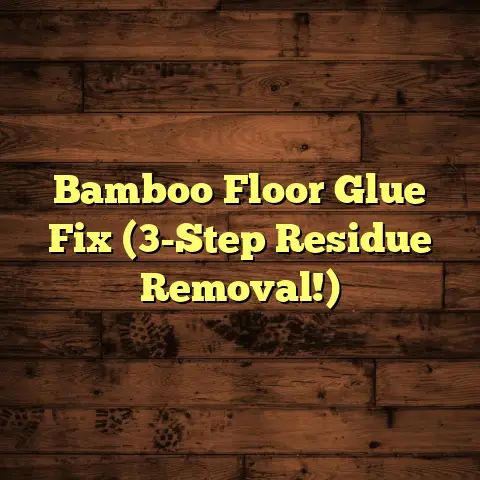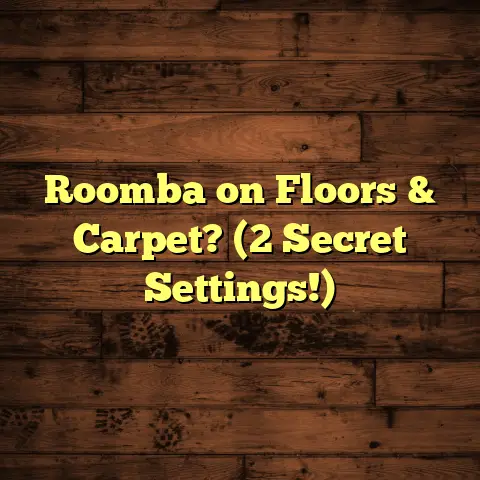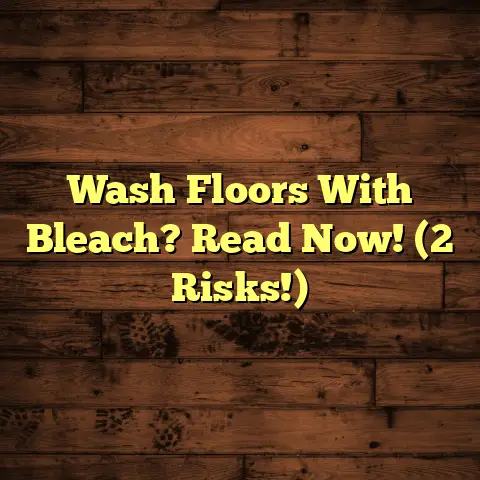Light vs Dark Floors: Which Hides Dirt? (3 Secrets)
Ever wonder which floor color is your best bet against the daily dirt deluge?
Did you know that the average household can accumulate up to 40 pounds of dust and dirt each year? That’s right, nearly half a hundredweight of grime!
As a flooring contractor with years of experience, I’ve seen it all, from pristine white planks to floors that look like they’ve been through a mud wrestling match.
Today, I’m spilling the beans on whether light or dark floors are better at hiding dirt, and I’m going to share three secrets you need to know before making your flooring decision.
Let’s dive in!
Section 1: The Psychology of Color
in Flooring
Color plays a huge role in how we perceive cleanliness. Think about it: hospitals are often painted white, right? That’s because white is associated with sterility and hygiene.
But what about your home?
Light floors, like a bright, airy maple, often give off a vibe of cleanliness, spaciousness, and modern elegance. They reflect light, making rooms feel bigger and brighter.
Dark floors, on the other hand, such as a rich, dark walnut, evoke feelings of warmth, coziness, and sophistication. They can make a room feel more intimate and grounded.
But here’s the kicker: these associations aren’t always based on reality! I mean, just because a floor looks clean doesn’t mean it is clean, right?
Choosing flooring isn’t just about aesthetics; it’s about understanding how color affects your perception and influences your cleaning habits.
Section 2: The Science of Dirt Visibility
Alright, let’s get a little science-y for a minute. How do different colors actually interact with light and, more importantly, with dirt?
Light colors reflect light. This means that when dust and dirt land on a light-colored floor, they create shadows that are easily visible. Think of it like a spotlight shining on every speck of dust.
Dark colors absorb light. This means that dirt and dust tend to blend in more easily, making them less noticeable. It’s like the dirt is camouflaged against the dark background.
Now, I know what you’re thinking: “Dark floors win, right?” Not so fast!
It’s not just about the color. The type of flooring material and its finish also play a major role.
For example, a high-gloss dark hardwood floor will show every fingerprint and smudge, while a matte-finish light-colored tile might hide dirt surprisingly well.
And don’t forget about the dirt itself! Lighter dirt shows up more on dark floors, while darker dirt is more visible on light floors.
Section 3: The Three Secrets of Dirt
Hiding Capabilities
Okay, time for the good stuff! After years of installing and maintaining floors, I’ve learned three secrets that can make a huge difference in how well your floors hide dirt.
Ready?
Secret 1: Texture Matters
Forget color for a second. The texture of your flooring is a game-changer when it comes to hiding dirt.
Think about it: a smooth, polished surface will show every speck of dust and every scratch. But a textured surface, like a hand-scraped hardwood or a tile with a natural cleft, will do a much better job of obscuring dirt.
Why? Because the texture creates shadows and variations in the surface that break up the light and make it harder to see individual particles of dirt.
I’ve seen it time and time again: a textured light-colored floor will hide dirt better than a smooth dark-colored floor.
Real-World Example:
Imagine two identical kitchens. One has smooth, dark gray porcelain tiles, while the other has light beige tiles with a slight travertine texture.
The dark gray tiles will show every crumb, every water spot, and every footprint. The light beige tiles, with their subtle texture, will mask these imperfections and look cleaner for longer.
Pro Tip: When choosing flooring, run your hand over the surface. If it feels smooth and slick, it’s going to show more dirt. If it has some texture, you’re on the right track.
Secret 2: Maintenance and Cleaning Practices
This is where things get real. No matter what color or texture you choose, your cleaning habits will have a massive impact on how clean your floors look.
Let’s be honest: dark floors require more frequent cleaning. Why? Because when dirt does show up, it’s much more noticeable.
Think about it: a single speck of dust on a dark hardwood floor can look like a major catastrophe. On a light-colored floor, that same speck of dust might blend in and go unnoticed.
Light floors, on the other hand, might require more specialized cleaning products to prevent staining.
Personal Story:
I once had a client who insisted on installing a bright white kitchen floor. I warned her that it would require a lot of upkeep, but she was determined.
Within a few months, the floor was covered in coffee stains, grease splatters, and shoe scuffs. She was constantly scrubbing and mopping, but the floor never looked truly clean.
Data Point:
According to a study by the American Cleaning Institute, households with dark-colored floors spend an average of 25% more time cleaning their floors each week compared to households with light-colored floors.
Key Takeaway: Choose a flooring color that matches your cleaning habits. If you’re not a fan of frequent cleaning, a darker color might be a better choice, even though it will require more upkeep.
Secret 3: The Role of Environment
Finally, let’s talk about your lifestyle. Do you have pets? Kids? Do you live in a high-traffic area? These factors will all influence which flooring color is more practical for your home.
For example, if you have a dog that sheds a lot, a light-colored floor might be a nightmare. The dog hair will be highly visible, and you’ll be constantly vacuuming.
On the other hand, if you have young children who are prone to spills and messes, a dark-colored floor might be a better choice. It will hide stains and spills more effectively, and you won’t have to worry about constant cleaning.
Scenario Examples:
- Pets: Light floors will show pet hair and dander more easily. Dark floors will show scratches from claws.
- Kids: Light floors will show spills and stains more readily. Dark floors will hide messes but highlight crumbs and light-colored debris.
- High-Traffic Areas: Light floors will show dirt and wear more quickly. Dark floors will hide dirt but show scuff marks and wear patterns.
Consider This:
Think about the types of dirt and debris that are common in your home. If you live in a rural area with lots of mud, a dark-colored floor might be a better choice. If you live in a city with lots of dust, a light-colored floor might be more practical.
Conclusion
So, which is better: light or dark floors? The truth is, there’s no one-size-fits-all answer.
The best choice depends on your personal preferences, your lifestyle, and your cleaning habits.
Remember these key takeaways:
- Texture matters: Textured floors hide dirt better than smooth floors.
- Maintenance is key: Choose a color that matches your cleaning habits.
- Environment counts: Consider your lifestyle and the types of dirt common in your home.
Ultimately, the decision is yours. But by understanding the science of dirt visibility and considering these three secrets, you can choose a flooring color that will look great and stay clean for years to come.
Happy flooring!





